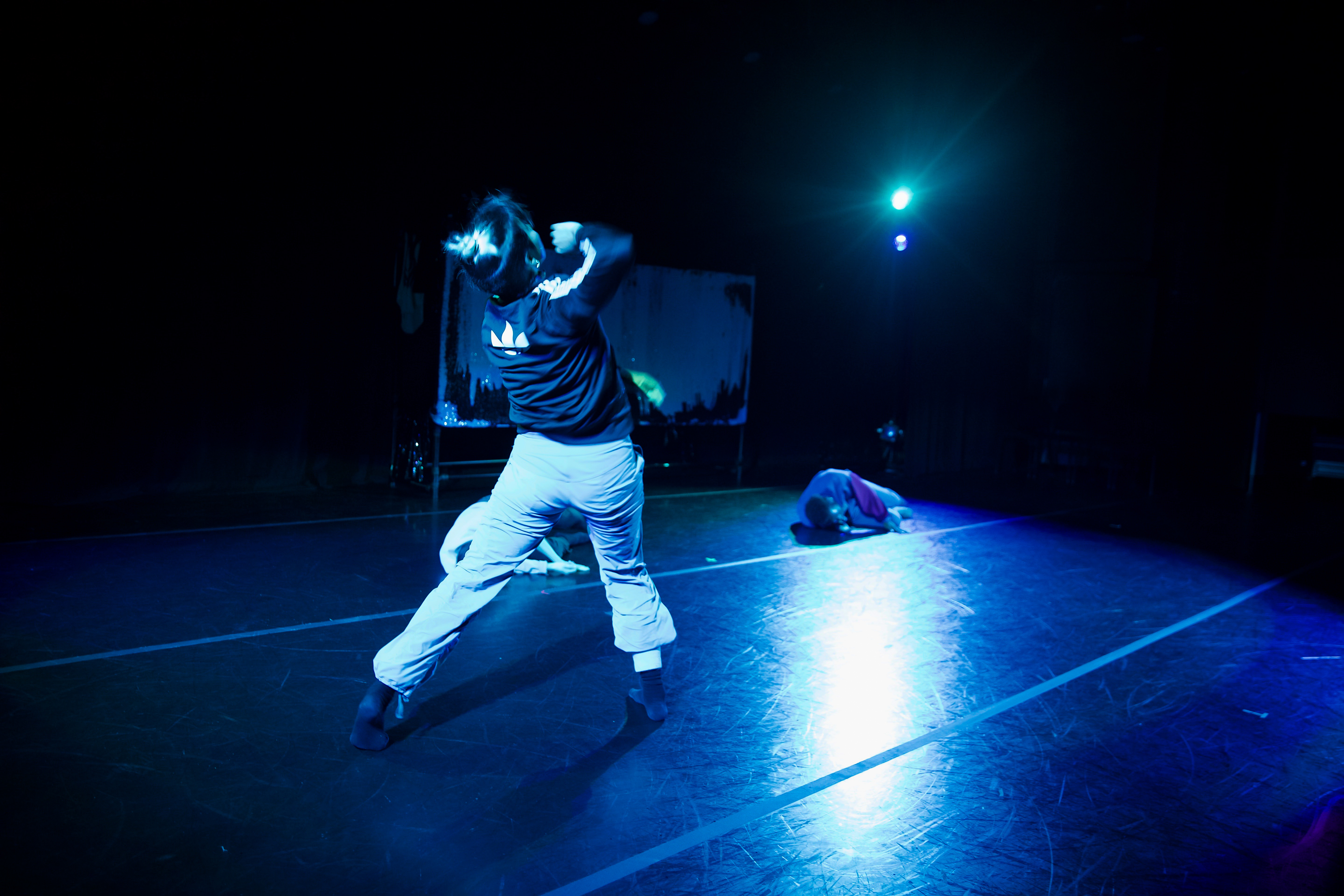By Rachel Morrison

“At Scripps, dance is about technical mastery, but it is also equally about humanistic inquiry and cultural connection,” says Ronnie Brosterman, professor of dance and chair of the Department of Dance. “We want to showcase and train integrated individuals who can think, feel, and speak with their bodies as well as their minds.”
With the aim of increasing social consciousness through innovative performances and concepts, Scripps’ performances take up some of the most pertinent issues in American culture. By blending innovative dance styles, integrating multimedia, and utilizing non-traditional performers and processes, these original works address political and social issues, taking up the mantle in the long American tradition of protest art.
One faculty member guided by this tradition is Assistant Professor of Dance Kevin Williamson. Observing rehearsals of his upcoming work-in-progress, Safe and Sound, which will be performed at Scripps’ Garrison Theater on October 15, 2019, one is struck by the seeming disparity between the festival-like atmosphere evoked by the piece’s use of club music and lighting and the gravity of the subject matter being explored.
“We are exploring through dance if there is a place where grief and pleasure can coexist,” says Williamson. “It’s a tricky thing to put into a theatrical space, so we are trying to show grieving and processing in a multitude of ways.”
A danced meditation on self-preservation and queer solidarity, the performance centers around questions of how we can create ritual, meaning, and safety amid a zeitgeist of violence and despair. Videos from the Los Angeles Pride Festival and Parade, Scripps’ own Margaret Fowler Garden, and Claremont’s Sycamore Elementary School are projected onto a sequined screen. They invite audiences to consider how individuals grapple with homophobia in environments that are presumed to be safe spaces. Concurrently, the dance, which utilizes movement from calisthenics, modern dance, and club dance, suggests unity and healing—such as with a signature aspect of the choreography, what Williamson calls an “empathy bounce.”
“We want the audience to feel safe, but we are also looking to maneuver in discomfort,” says Williamson. “The piece ends in ritual and togetherness—a choreography of embrace between two dancers.”
The performance also explores the power of language by playing news soundbites in the dark to let the weight of words penetrate the audience’s sensibilities without distraction. “Yet, it isn’t all negativity—the dancers subvert and rearrange the negativity through positive movement,” explains Williamson. “My hope is that by the end, both the dancers and the audiences have new memories of tenderness, support, and queer love,” he says.
Suchi Branfman, Los Angeles-based choreographer and Scripps faculty, takes aim at the prison industrial complex— the web of prisons, legal and parole systems, and public and private companies that profit off of and perpetuate mass incarceration—in her upcoming performance, Dancing Through Prison Walls, at 8:00pm on November 8 at Scripps’ Garrison Theater. The evening includes dances inspired by Branfman’s current five-year choreographic residency at the California Rehabilitation Center, a medium-security state men’s prison in Norco, California, and other encounters she has had with the prison industrial complex through her creative and scholarly work.
During her residency, Branfman worked with incarcerated men inside the prison to develop and perform original choreography. “Dance is a profoundly liberating act, especially while incarcerated, basically living in a cage,” she says. “During the time that we dance together we attempt to facilitate a space where people are engaged as complete, respected humans with bodies, hearts, souls, and minds, and whose stories are valued.”
One of the men Branfman met through this work was Ernst Fenelon Jr., who was formerly incarcerated for 14 years. His story made an impression so profound that it led to the creation of one of the pieces that will be performed, “Angee’s Journey,” co-choregraphed by Branfman and Fenelon.
The piece centers on Fenelon’s mother’s repeated 50-hour, 800-mile trek to visit him in prison and is performed by mother, son, grandson, and a chorus of dancers. Branfman and Fenelon recreated his mother’s journey from Los Angeles to California Medical Facility in Vacaville, California, reliving her story along the way. The resulting recorded footage, as well as images from inside the prison and interviews with Fenelon and his mother, all informed the creation of “Angee’s Journey,” which the LA Dance Chronicle describes as “a true testament to how art can help heal, to an artist’s devotion, to preservation of one’s spirit, and to the power of a mother’s love.”
Also being presented during Dancing Through Prison Walls is “Janie,” an intimate performance piece that draws on interviews with MaryJane, also known as The Bird Lady, who rescues and raises birds while serving a life sentence inside the women’s maximum-security prison in Southern California.
“These pieces echo and honor the experiences of tens of thousands of family members, centering on the women who support their loved ones through years and decades of incarceration across the country where 2.3 million people are currently incarcerated,” says Branfman. “This, and much of my work, centers on contemporary topics of social injustice. I want to engage audiences in the work and invite them to leave the theater thinking about their own implication in, and relationship to, those issues.”
She adds, “There is a profound connection between dancing and freedom.”

